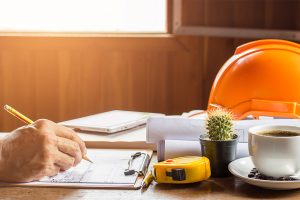7 Steps to Prevent Slips, Trips and Falls in the Workplace
A Common Safety Problem 
Slips, trips, and falls are a problem in good weather, when you add bad weather, such as snow, ice, and excessive rain and humidity, concern for people slipping and falling increases.
A Troubling Workplace Safety Statistic
According to the Bureau of Labor Statistics, more than a million people go to the emergency room each year for a slip and fall accident at work. Unfortunately, some of these are fatalities.
Everywhere, from offices to commercial and industrial settings, is vulnerable to slips, trips, and falls. All employers have a responsibility to identify and remedy potential slip, trip, and fall hazards both inside and outside of their facilities.
7 Steps to Prevent Slips, Trips and Falls
Whatever the setting, following these basic 7 steps will help you reduce the risk and liability of slips, trips, and falls.
-
Identify Potential Causes with Safety Inspections
Safety inspections include an assessment of where people go and what they do and note potential hazards along the way.
- Three major issues to monitor include:
- Employee traffic patterns throughout the day, the type, and the rhythm
- The environment; wet, dry, greasy, elevated, exposed to weather
- The walking surfaces; smooth, slippery, uneven, resistance to shoe surface, elevated, flat
-
Employ Good Housekeeping practices
– Safety and good housekeeping go hand and hand. It is important that these housekeeping practices become daily routines.
-
Mitigate Wet and Slippery Surfaces
– Walking on slippery and wet surfaces can be particularly dangerous, especially on low-friction surfaces. It is important to regularly monitor surfaces for this and to take appropriate steps to mitigate problem situations with such measures as cleaning up spills quickly, cleaning up grease quickly and not letting it accumulate, and de-icing exterior walkways.
-
Keep Aisles and Walkways Clear
– Proper housekeeping in work and traffic areas is critical to a safe environment. Remove obstacles, clutter, cables, debris, equipment from aisles, corridors, entranceways and stairwells.
-
Install and Maintain Good Lighting
– While this is a common problem, it is important to correct any lighting deficiencies. Without good lighting people cannot be safe. That means when conducting the safety inspection evaluate the lighting in walkways, staircases, common areas, work areas and whether it is well maintained.
-
Insist Employees Wear Work Appropriate Shoes
– Whenever a fall-related injury is investigated, the footwear of the person needs to be evaluated to see if it contributed to the incident. Employees need to wear footwear appropriate for their duties at work.
-
Monitor Employee Personal Behavior
– Individual employee behavior is important for a safe environment. Safety training and education is an important tool in the workplace to encourage employees to practice safety throughout their daily activities. Being in a hurry, taking shortcuts, and being preoccupied all contribute to reducing our awareness of safe practices.
Creating a Safer Work Environment
Slips, trips, and falls are serious. These 7 practices will help to reduce this threat and help to insure a safer environment for everyone.
Ohio Workplace Safety Compliance and Environmental Health and Safety Programs
A safety program, including assessments, planning, and training, can be done by an outside firm so that you can keep your focus on your business — and you can ensure that you are in compliance with all Ohio workplace safety regulations. A consultant can help you determine what you need to stay in compliance and can draft a full program for you and conduct audits and inspections.
Crafting a Safety Program for your Dayton Business
Getting your workplace in compliance with Ohio workplace regulations is easy with Turn-Key Environmental Consultants.
Contact us today to discuss needs for your company’s workplace safety.
Read on for more about our Ohio safety services and environmental compliance:
Ohio Workplace Compliance and Permitting
Are You Up to date with your company’s Ohio Industrial Compliance


